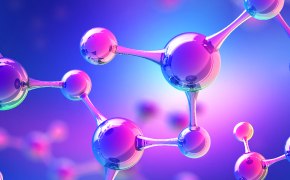Chelating & Reducing Agents for Research

We offer a wide range of chelating and reducing agents in high-purity grades and diverse forms for biochemical research.
Chelators, or chelating agents, are found in biological substances and are utilized for the removal of heavy metal impurities, which can be often toxic, and restore cellular metabolism. Through their ring structures, chelators can establish two or more bonds with metal ions, resulting in the formation of water-soluble, stable complexes. Ethylenediamine, EDTA, and EGTA are well-known examples of chelators.
Conducting both protein biochemistry analysis and oxidation-reduction reactions necessitates the use of reducers or reducing agents, also known as reductants. Reductants donate electrons in a redox chemical reaction. Several common reducing agents are DL-Dithiothreitol (DTT), sodium dithionate, DTE, TCEP, β-mercaptoethanol (BME), and Nitrilotriacetic acid (NTA).
Products
Products
CHELATING AGENTS IN RESEARCH
Chelators are used as complexing agents. They are helpful in various chemical and biochemical analyses as a buffer component, nucleic acid/protein degradation inhibitor, enzymatic reaction catalyzer, affinity chromatography, and cell culture. Chelators are potent therapeutic agents to balance metabolism and associated diseases such as anemia, cancer, acute kidney disease, aging, neurodegenerative disorders, etc. In industrial, analytical, and laboratory experiments, these metal-ion chelators are used as extractants, indicators, and metal separation agents.
REDUCING AGENTS IN RESEARCH
Reducers are utilized in proteomics methods such as protein purification, denaturation, and solubilization and are particularly adept in stabilizing free sulfhydryl groups and reducing disulfide (SH) bonds in proteins and peptides. In protein purification, they act as enzyme stabilizers within buffers, preventing aggregation by cysteine residue oxidation. Reducers also serve as biological antioxidants, averting protein oxidation and denaturing ribonucleases. Research has demonstrated that using chelating reagents in combination with reducing agents supports the removal of cationic heavy metals and anionic contaminants, such as arsenic.
Related Resources
- Article: Chelators
BioUltra Chelators. A chelate is a water-soluble complex between a metal ion and a complexing agent. It usually does not dissociate easily in solution, but forms an inert complex.
- Protocol: Nuclear Protein Extraction Without the Use of Detergent
Detergent-free procedure is recommended for nuclear protein preparation to avoid interference with labeling efficiency of extracted proteins.
- Calculators & Apps: Detergent-based Western Blot Stripping Buffer
This recipe for a detergent-based stripping solution enables the removal of antibodies from Western blots that have been developed with chemiluminescence or radioactive iodine or other isotopes.
- Flyer: Biochemicals for New and Growing Labs
Discover how our high-purity biological buffers, detergents, and reagents can help empower your innovation and build a better lab.
To continue reading please sign in or create an account.
Don't Have An Account?